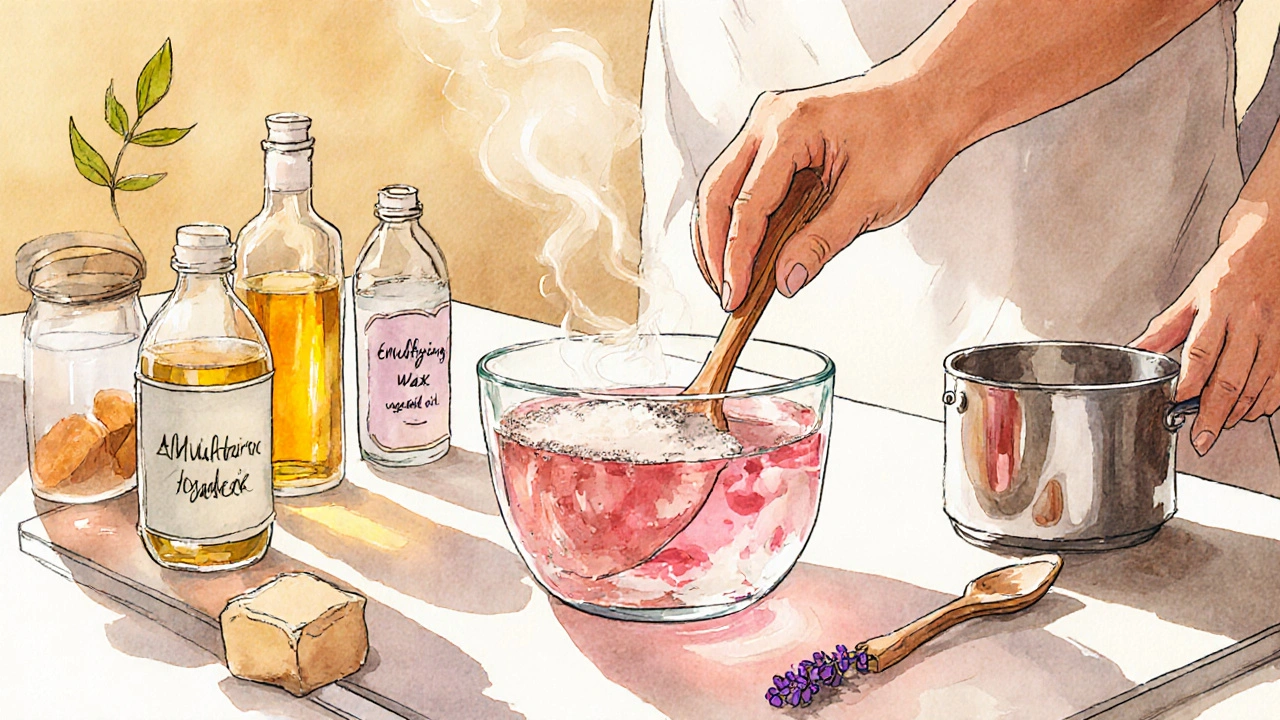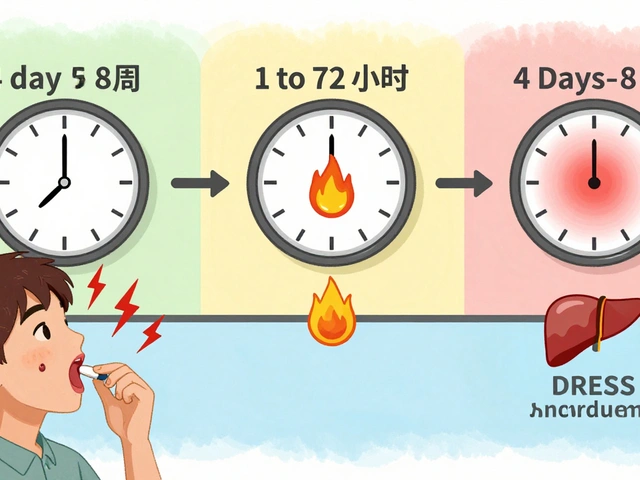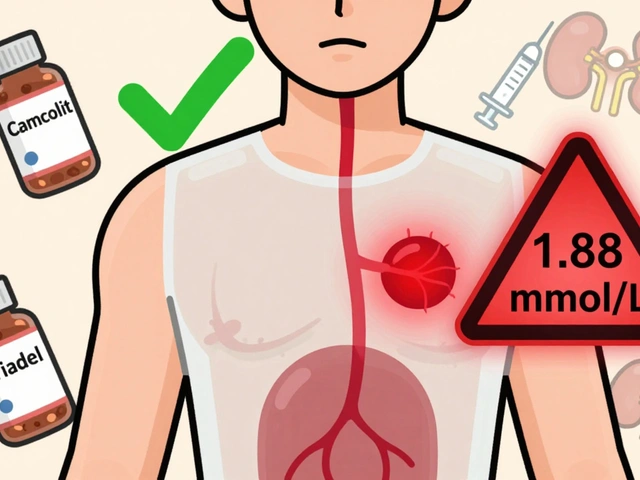
Ever looked at your skin in the mirror and wished it looked smoother, calmer, and just a little more radiant-without spending a fortune? You’re not alone. Many people turn to harsh chemicals or expensive serums, but the secret to healthy, glowing skin might be simpler than you think. Meet allantoin is a naturally occurring compound found in comfrey root, chamomile, and even snail mucous. It’s gentle, non-irritating, and works by soothing inflammation and encouraging skin cell turnover. Also known as 2,5-dioxo-4-imidazolidinylurea, it’s been used in dermatology for over 60 years and is a staple in sensitive skin products worldwide.
Why allantoin works better than you think
Allantoin isn’t flashy. It doesn’t promise instant results like retinol or the plumping effect of hyaluronic acid. But what it does, it does quietly, reliably, and without triggering redness or stinging. If you’ve ever had eczema, rosacea, or just skin that gets irritated easily, allantoin is your quiet hero.
It works in three simple ways:
- It gently exfoliates dead skin cells without scrubbing-perfect for dry or flaky patches.
- It speeds up the healing of minor cuts, sunburns, and razor nicks by stimulating cell regeneration.
- It locks in moisture by strengthening the skin’s natural barrier, reducing transepidermal water loss.
Studies from the Journal of Clinical and Aesthetic Dermatology show that 0.5% to 2% allantoin concentrations significantly improve skin hydration and reduce irritation in sensitive skin types. That’s why it’s in brands like CeraVe, Aveeno, and even baby diaper creams. You don’t need a lab to use it-just a little patience and the right base.
What you’ll need to make your own allantoin skincare
You can buy allantoin powder online from cosmetic suppliers like Lotioncrafter, MakingCosmetics, or even Amazon (look for USP-grade, 99% pure). It’s cheap-usually under $10 for 10 grams, which makes dozens of batches. Here’s what else you’ll need:
- Distilled water or rosewater (for mixing)
- Vegetable glycerin (a humectant to hold moisture)
- Emulsifying wax (to blend oil and water)
- Light carrier oil like jojoba, sweet almond, or squalane
- Essential oils (optional: chamomile, lavender, or calendula for extra calming)
- A small double boiler or microwave-safe bowl
- Small glass jars or airless pumps for storage
Important: Allantoin doesn’t dissolve in oil. It needs water or a water-based solution to activate. That’s why you can’t just mix it into a plain lotion without proper emulsification.
Recipe 1: Soothing Allantoin Moisturizer for Sensitive Skin
This is your daily go-to if your skin feels tight, red, or reactive. It’s lightweight, absorbs fast, and won’t clog pores.
- Heat 50 ml of distilled water and 10 ml of vegetable glycerin in a double boiler until warm (not boiling).
- Add 0.5 grams of allantoin powder and stir until fully dissolved-this takes about 3 minutes. Don’t skip stirring; undissolved granules can feel gritty.
- In a separate bowl, melt 5 grams of emulsifying wax and 15 ml of jojoba oil together.
- Slowly pour the water mixture into the oil mixture while whisking continuously with a hand mixer or fork. Keep mixing for 2-3 minutes until creamy.
- Let it cool slightly, then add 3 drops of lavender essential oil (optional) and stir gently.
- Pour into a clean jar. Let it set for 4 hours before use.
Use this every morning and night. It lasts 3-4 months if stored in a cool, dark place. No preservatives needed because the water content is low and glycerin acts as a natural inhibitor.
Recipe 2: Overnight Repair Allantoin Balm
For nights when your skin feels beaten down-after a long day, a bad sleep, or a windy walk-the balm is your armor. It’s thicker, richer, and perfect for dry elbows, cracked heels, or winter-chapped lips.
- Melt 10 grams of beeswax, 15 grams of shea butter, and 10 ml of sweet almond oil in a double boiler.
- Remove from heat and stir in 0.3 grams of allantoin powder. Mix well until fully blended.
- Add 2 drops of chamomile essential oil and 1 drop of vitamin E oil (optional, for antioxidant boost).
- Pour into small tins or lip balm tubes.
- Let sit for 1 hour to harden.
Apply a thin layer before bed. It melts into the skin and leaves no greasy residue. Use it on any area that feels rough or inflamed. Many users report smoother skin in just 3-5 days.

Recipe 3: Allantoin + Aloe Vera Toner for Acne-Prone Skin
If you’re battling breakouts but your skin is too sensitive for witch hazel or alcohol-based toners, this is your answer. Allantoin calms inflammation, while aloe vera reduces redness and controls oil.
- Combine 70 ml of pure aloe vera gel (check the label-no alcohol or fragrance) with 20 ml of rosewater.
- Add 0.2 grams of allantoin powder and stir until dissolved. This may take a few minutes of constant stirring.
- Optional: Add 1 drop of tea tree oil for antibacterial support.
- Pour into a spray bottle.
Shake before each use. Mist on after cleansing, before serum. It’s cooling, refreshing, and doesn’t strip your skin. Use twice daily. Many people with hormonal acne notice fewer flare-ups within a week.
Common mistakes to avoid
DIY skincare sounds easy-but a few missteps can ruin your batch or irritate your skin.
- Using too much allantoin: More isn’t better. Stick to 0.2%-2%. Over 2% can cause slight stickiness or clog pores in oily skin.
- Not dissolving it properly: If you see white specks, you didn’t dissolve it fully. Heat it longer or use warm water.
- Adding it to hot oil: Allantoin needs water to activate. Don’t add it to pure oils-it won’t work.
- Skipping preservatives in high-water recipes: If your toner or lotion has more than 30% water, add a natural preservative like Leucidal Liquid (1-2%) to prevent mold.
- Using tap water: Minerals in tap water can react with ingredients. Always use distilled or boiled-and-cooled water.
Who should avoid allantoin?
Allantoin is one of the safest skincare ingredients out there. But if you’re allergic to plants in the Comfrey family, test a tiny amount on your inner wrist first. There are no known interactions with medications. It’s safe during pregnancy and for babies. Even people with rosacea, psoriasis, and post-laser skin use it daily.
One thing to remember: Allantoin doesn’t treat acne directly. It doesn’t kill bacteria. But it helps your skin recover faster from breakouts, reduces redness, and prevents scarring. Pair it with niacinamide or zinc for better results.
How long until you see results?
Don’t expect miracles overnight. Allantoin works slowly, like a gardener tending soil. Most users notice:
- Less irritation after 2-3 days
- Improved hydration by day 5
- Smoother texture and glow by day 10-14
It’s not a quick fix. It’s a long-term investment in skin resilience. Once your skin barrier is stronger, you’ll notice fewer reactions to weather, pollution, and even your favorite cleanser.
Where to buy allantoin powder
You can find USP-grade allantoin from these trusted suppliers:
- Lotioncrafter (USA)
- MakingCosmetics (USA)
- Botanica (Australia)
- Amazon (search for "USP allantoin powder 99% pure")
Avoid cheap powders from unknown sellers on Etsy or eBay. Purity matters. Look for "USP" or "pharmaceutical grade" on the label.
Next steps: Build your allantoin routine
Start simple. Pick one recipe-maybe the moisturizer-and use it for two weeks. Track how your skin feels. Then add the toner if you’re acne-prone, or the balm if your hands or feet are dry.
Once you’re comfortable, try layering it under your favorite vitamin C serum or retinol. Allantoin actually reduces the irritation caused by stronger actives. Many dermatologists recommend it as a buffer for people starting retinoids.
Your skin doesn’t need a 10-step routine. It needs calm, consistent care. Allantoin gives you both.
Can I use allantoin every day?
Yes, allantoin is safe for daily use, even twice a day. It’s non-irritating and doesn’t build up in the skin. Many people use it morning and night without any issues.
Does allantoin lighten skin?
No, allantoin doesn’t bleach or lighten skin tone. It improves skin texture and radiance by removing dead cells and reducing redness, which can make skin look brighter-but it won’t change your natural pigmentation.
Can I mix allantoin with vitamin C?
Yes, and it’s actually a great combo. Vitamin C can irritate sensitive skin, but allantoin helps soothe that irritation. Use the vitamin C serum first, then follow with your allantoin moisturizer.
How long does homemade allantoin skincare last?
Without preservatives, recipes with low water content (like balms) last 6-12 months. Water-based products like toners and lotions last 3-4 months if refrigerated. Always smell and check for changes before using.
Is allantoin better than hyaluronic acid?
They do different things. Hyaluronic acid pulls water into the skin. Allantoin repairs the skin barrier so it holds onto that water longer. For best results, use both: hyaluronic acid first, then allantoin to seal it in.
9 Comments
Jen Taylor
October 31, 2025 at 11:41 AM
Oh my god YES this is the holy grail for sensitive skin!
I've been using allantoin for six months now after my dermatologist suggested it for my rosacea
It doesn't fix everything but it makes everything bearable
My skin doesn't scream when I wash my face anymore
I mix it with a drop of squalane and it's like a hug for my face
Also the balm recipe? Absolute genius for my cracked knuckles
I keep a tin in my purse and my partner steals it every time he shaves
Don't overthink it just start with the moisturizer and see how your skin reacts
You won't regret it
Christy Tomerlin
November 1, 2025 at 00:30 AM
Allantoin is just a fancy word for filler
Stop pretending it's magic
Use a moisturizer and stop chasing ingredients
Shilah Lala
November 1, 2025 at 04:28 AM
So let me get this straight
You're telling me the secret to glowing skin is a compound found in snail slime and comfrey
And we're supposed to be amazed because it's cheaper than a face serum?
My grandma used lard and lemon juice and lived to 98
Maybe we don't need all this science
Maybe we just need to stop trying so hard
Linda Patterson
November 1, 2025 at 18:12 PM
Using allantoin is fine I guess if you're into that hippie DIY stuff
But why not just buy something from a real company that tests their products?
Amazon is full of sketchy powders from China
And you're telling people to mix their own skincare with no preservatives?
That's not science that's a lawsuit waiting to happen
My cousin got a fungal infection from a homemade toner
Don't be that person
Tyler Mofield
November 3, 2025 at 12:11 PM
The empirical evidence supporting allantoin's efficacy in modulating keratinocyte proliferation and reducing transepidermal water loss is well documented in peer-reviewed dermatological literature
However the amateur formulation protocols outlined herein lack rigorous sterility controls and fail to account for microbial contamination thresholds under non-aseptic conditions
Furthermore the assertion that glycerin serves as a sufficient preservative is pharmacologically indefensible
Recommendation: Utilize commercially manufactured formulations with validated preservative systems or risk iatrogenic dermatitis
Patrick Dwyer
November 5, 2025 at 10:56 AM
I appreciate the depth of this guide and the care you've put into explaining the science
Many people feel overwhelmed by skincare and this gives them a real starting point
One small addition: if you're using the toner recipe and live in a humid climate consider adding a drop of rosemary extract for natural antioxidant support
It won't change the texture but it helps stability
And thank you for emphasizing distilled water
So many DIYers skip this and wonder why their batch turns cloudy after a week
You're not just sharing a recipe you're sharing wisdom
luna dream
November 6, 2025 at 07:42 AM
Did you know allantoin was originally extracted from comfrey root which was banned in the 90s for liver toxicity?
They just renamed it and sold it as safe
Big skincare doesn't want you to know the truth
They profit from fear and confusion
What if your skin doesn't need fixing at all?
What if you're just being told you're broken?
And what if allantoin is just another way to make you buy more stuff?
I stopped using everything except water and my skin got better
Not because of science
Because I stopped listening
Lorena Cabal Lopez
November 7, 2025 at 22:54 PM
I tried this and my skin broke out
Guess it's not for everyone
Waste of time






Susan Karabin
October 29, 2025 at 12:25 PM
Just tried the allantoin moisturizer last night and my skin feels like it breathed for the first time in years
No redness no tightness just quiet calm
Woke up looking like I slept eight hours even though I didn't